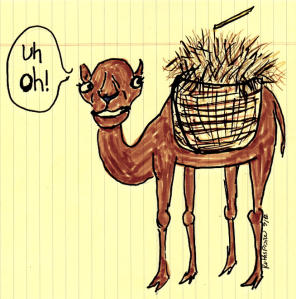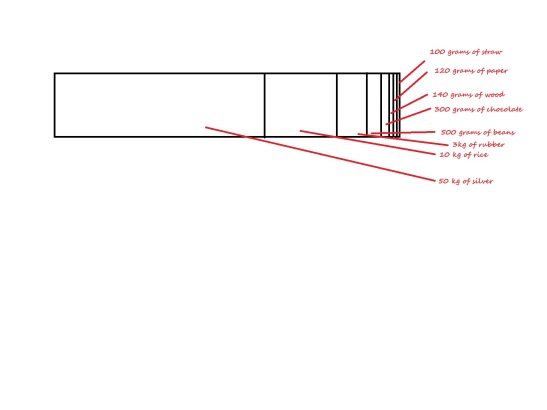The Last Straw Fallacy: Another Causal Fallacy and Its Harmful Effects
by Carolyn Cusick & Mark Peter
November 2015
Argumentation; Nov. 2015, Vol. 29 Issue 4, p. 457
“We have noticed a pattern of arguments that exhibit a type of irrationality or a particular informal logical fallacy that is not fully captured by any existing fallacy. This fallacy can be explored through three examples where one misattributes a cause by focusing on a smaller portion of a larger set-specifically, the last or least known-and claiming that that cause holds a unique priority over other contributing factors for the occurrence of an event. We propose to call this fallacy the ‘last straw fallacy’ and will argue why these examples actually warrant a new logical name. Finally, we will show how these cases point to a deeper insight about the contexts in which we typically invoke this type of reasoning and some significant harmful consequences of doing so.”
Source: The Last Straw Fallacy: Another Causal Fallacy and Its Harmful Effects
Brilliant! I’ve been looking for a name for this particular (and incredibly common) mistake in reasoning, and thanks to the interwebz I finally found it! It’s very important to analysis because as obvious as the mistake is, it’s so widespread it’s become part of the general discourse. When people talk about a group that “tips” an election, for example, that’s the mistake they’re making. The most relevant group in deciding an election is, of course, the majority group. Or, if you want to use the camel example, look at the chart below and tell me what was the number one contributor to the breaking of the camel’s back. Not the straw. In fact, everything else is more important than the straw.



And the people who commit this fallacy? Bind them up in causal chains, I say!
LikeLiked by 1 person
I read that first as “casual chains,” and it set my mind a-wandering. What on earth is a casual chain?
LikeLiked by 1 person
It’s a chain that you use “causal” you need one.
LikeLiked by 2 people
One for which you don’t wear leather?
LikeLiked by 2 people
LOL!
LikeLiked by 1 person
🙂
LikeLike
Something from 50 Shades of Grey!
LikeLiked by 1 person
Sounds fairly similar to the availability heuristic, but I like the emphasis on straws and camels 😉
LikeLiked by 1 person
This is the era of Brexit and the Trump supporter. I’m on the verge of walking around with puppets so I can explain things to people in a way they’ll understand 😀
LikeLiked by 2 people
Pink, it’s the straw :-). It was put last. I am reading a book and the author says at one point the German peasants were so heavily taxed, if it had been a horse wagon, adding an egg to it would have killed the horse
LikeLiked by 3 people
If you were here I’d slap you, you bastard! 😛
LikeLiked by 2 people
See, you missed the whole point here. An egg is irrelevant to the argument. We’re talking about STRAW. AND, where in the hell did you see anyone talking about horses? We’re talking about camels. My god, man! What is up with you? 🙂
(Terrific, informative article,BTW).
LikeLiked by 3 people
Thanks 🙂 It probably seems obvious to many, but you wouldn’t believe how common a mistake it is.
LikeLiked by 2 people
Well, living in America, some of the incredible intelligence of my fellow countrymen probably rubbed off on me. 🙂
LikeLiked by 2 people
Sorry, camels and horses all have backs you know
LikeLiked by 1 person
And 4 legs. Let’s not forget that.
LikeLike
Ah but mathematically if the straw that breaks the camel’s back = 100 then, as
99 can NEVER equal 100, the camel’s back will never break. -runs away laughing-
LikeLiked by 1 person
You and Mak have to stand in the corner!
LikeLike
Meanie! C’mon Mak…we’re not wanted. -sniff-
LikeLike
Do we face the wall or away?
LikeLiked by 1 person
You face the camel.
LikeLiked by 1 person
You face the wall!
LikeLike
Disagree. The last straw is the moment of collapse NOT the process of collapse. Last straw is the instance in time when the response activates so the last straw is a definable and finite effect but yes, certainly not independent of the progression your chart represents. Last straw is also crossing the line of acceptability forcing a response to the violated ultimatum. So I think last straw argument is valid. If the last straw represents the atom of weight that brings down the house your argument that it is the culmination not the straw is invalid. Certainly the mass represented by the chart is undeniable. The events that lead to the Japanese attack on Pearl Harbor were a relatively tame progression of events but the moment of attack was based on a strategy of immediacy not a weighty or dramatic progression or culmination of events in the Pacific. It was a surprise, unexpected effect wherein the cause was relatively insignificant in mass and weight or political/military drama.Pearl Harbor became THE straw but on the back of a camel that could have held many more straws before erupting into war. However, I would agree that the progression of the events leading to WW 2 in Europe certainly is a legitimate affirmation of your theory.
LikeLiked by 1 person
That’s a very interesting interpretation, but I’m afraid it’s problematic. Is your argument that the order of events is the factor that determines the outcome?
The fundamental concept here is that (as with availability heuristic) the place in the order alone isn’t what determines value or importance. High emphasis on the word alone.
If we take your example of Pearl Harbor, it was an unprovoked attack on the world’s wealthiest nation which also happened to have the world’s greatest military capability (and the world’s 2nd largest army.) So although in number of deaths in the context of WWII it might look like it can be represented by (the variable) straw, it can’t be straw if you factor in all of the implications. Put another way, it wouldn’t have mattered if the attack on Pearl Harbor was on a Friday morning instead of a Sunday morning, the response to it would in all likelihood have been the same.
LikeLike
What would be words to define the moment of collapse ? Does the moment of collapse or dramatic end effect have any definable value in the discussion ? Argument in the abstract takes endless twists and turns and not sure if applicable to the concrete tangible world. Some thinkers are so eloquent they could convince an Eskimo to buy tons of snow. I got that MA theology and almost 40 years since I engaged with logic, ethics, and such. My last straw with it was when it left me with scrambled eggs for brains. Purchasing a nice straw Panama hat is probably the extent of my ability in the conversation.
LikeLiked by 1 person
I see where you’re coming from. I think we’re talking about two different things. You can certainly name an event/moment “the straw that breaks the camel’s back” as a metaphor for time, but that’s different to the assignation of importance. To assign importance we have to look at all the contributing factors and then order them according to their “size”.
LikeLiked by 1 person
Perhaps we should include the camel in the discussion. Seems he would be the “go to guy” on the matter.
LikeLiked by 1 person
😀
LikeLike
Why does it have to be straw? Some things are heavier than others.
LikeLiked by 1 person
How many 26 cent stamps are in a dozen ?
LikeLiked by 1 person